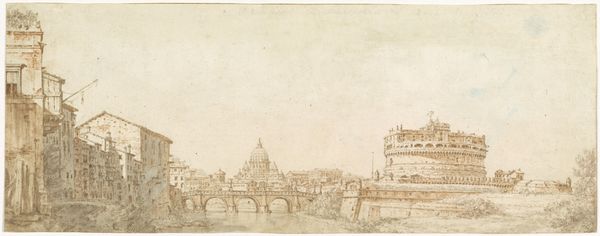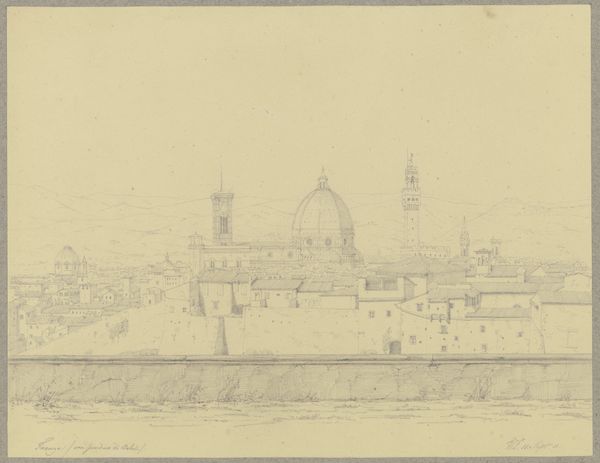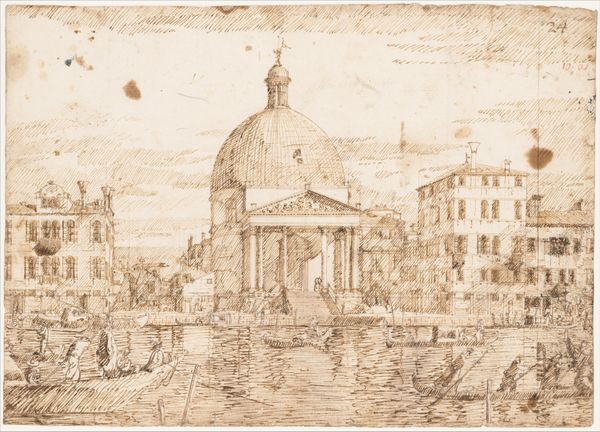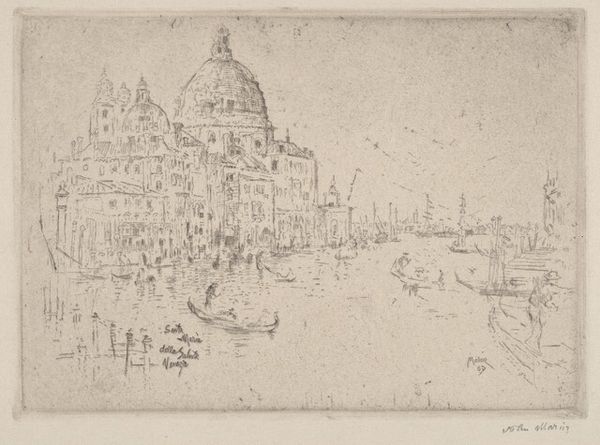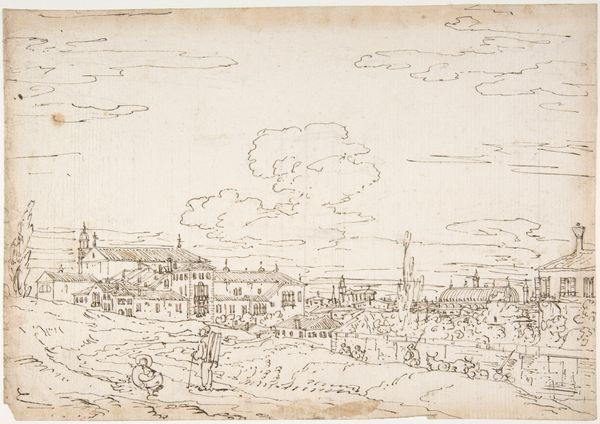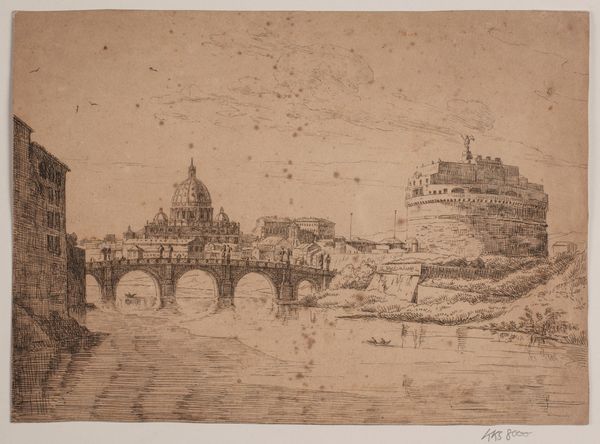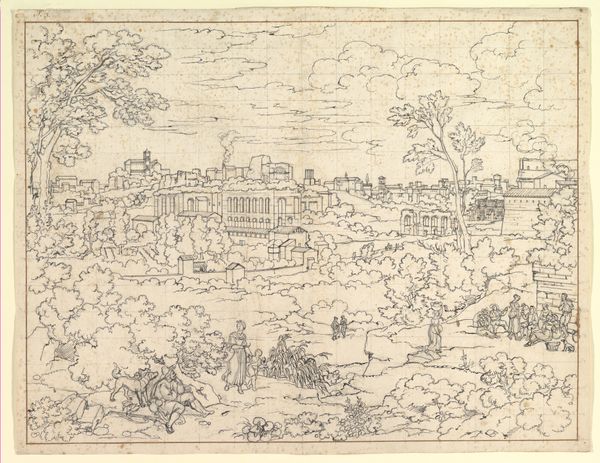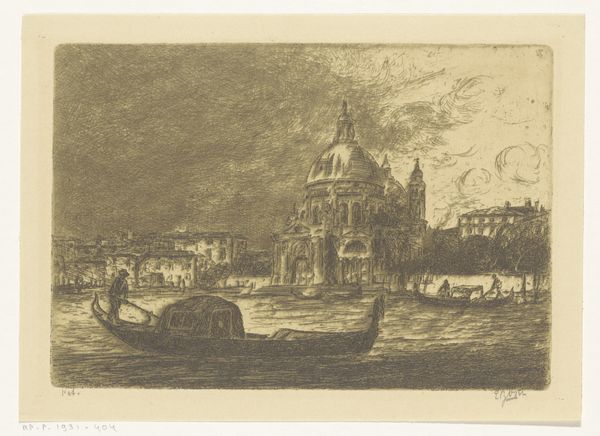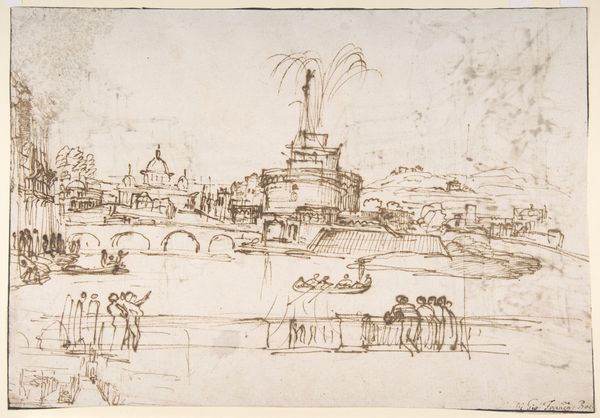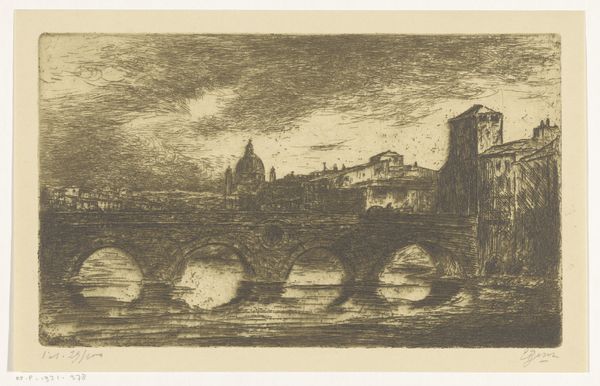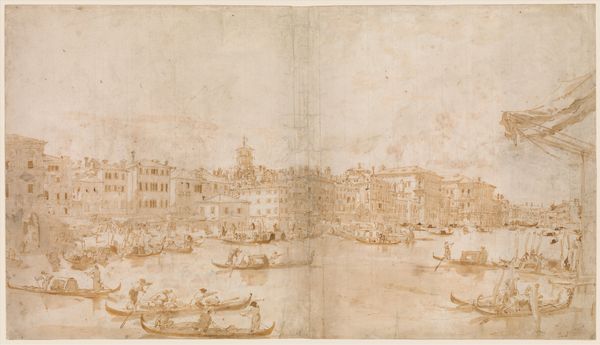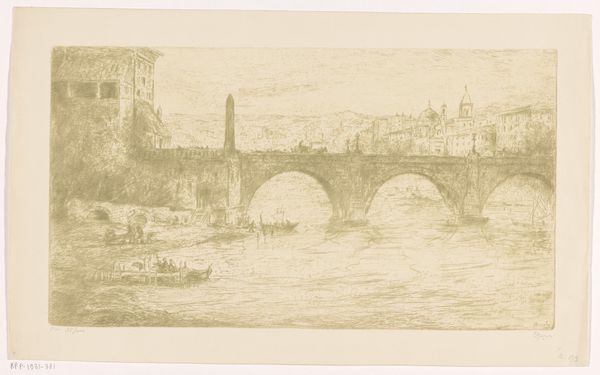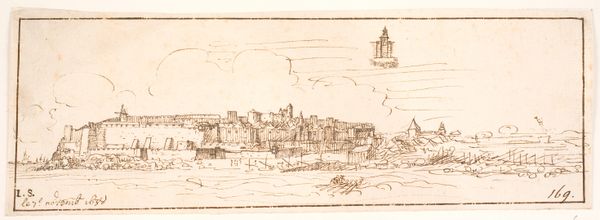
The Tiber with Saint Peter's and the Castel S. Angelo (recto) 1765 - 1768
0:00
0:00
drawing, paper, ink
#
drawing
#
neoclassicism
#
landscape
#
etching
#
paper
#
ink
#
cityscape
Dimensions: sheet: 15.9 × 26.1 cm (6 1/4 × 10 1/4 in.)
Copyright: National Gallery of Art: CC0 1.0
Art Historian: This is William Marlow’s "The Tiber with Saint Peter's and the Castel S. Angelo," a drawing rendered in ink on paper sometime between 1765 and 1768. Art Historian: There's something both ephemeral and monumental about this sketch. It captures the lightness of the clouds alongside the gravitas of those iconic buildings. Art Historian: Marlow was, of course, working within the conventions of the Grand Tour, offering views like this one as souvenirs of Italy's classical past. Though, as a commercial product, the work stands to attest English tastes and aesthetic preoccupations during the second half of the eighteenth century. Art Historian: It's the light that strikes me – or the suggestion of it, rather. See how he uses these delicate ink lines to almost choreograph how your eye moves? The river acts as a mirror reflecting and elongating the imposing structures of both St. Peter's and the Castel Sant'Angelo. Water carries connotations of time, of memory, of transformation, it's a wonderful and very apt choice. Art Historian: Indeed. Though I wonder, if Marlow's intended audience felt anything of the deep well of symbolism we detect. My suspicion is the picturesque and sublime view served to reinforce England's own budding imperial ambitions and power. Owning these images provided bragging rights, conferring a certain cultural prestige on its commissioners, the elites. Art Historian: Possibly. But there's a clear human element too; the small boats, so deftly drawn, bring the entire scene down to earth, don’t you think? They’re active participants within history’s theatre. Each little vessel a metaphor for humanity's fleeting journey. Art Historian: I agree that element is compelling! And a powerful reminder that art can be both deeply personal and thoroughly enmeshed within social and economic networks of the past. Art Historian: Absolutely! It’s fascinating how the interplay of personal artistic vision and socio-historical forces meet in one image. Thanks to Marlow, the enduring symbolic resonance continues to ripple through time.
Comments
No comments
Be the first to comment and join the conversation on the ultimate creative platform.
